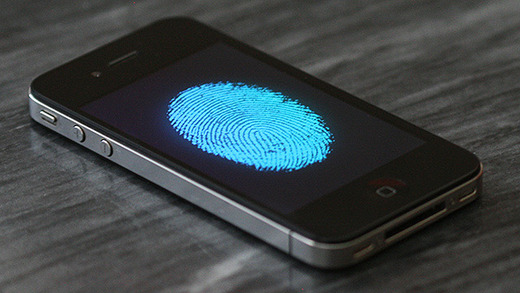PALO ALTO, Calif. — HP technology will make a return appearance on the 11th season of Lifetime Television’s Emmy® Award-nominated hit “Project Runway,” celebrating five years of incorporating technology into the compelling fashion competition and recognizing its increasing impact on the creative arts.
“Project Runway” is at the forefront of the intersection of the fashion and technology industries. The capabilities of HP and Intel allow the show’s competitors to make technology matter in their work by integrating it into fashion’s creative process.
“Whether providing superior ability to sketch on the HP ENVY TouchSmart UltrabookTM or delivering crisp and unique prints, HP and Intel’s innovative technologies will help play an essential role in the show’s creative process,” said Chris Bohrer, director, Worldwide Consumer PC Marketing, HP.
“We are again delighted that HP will join us as a sponsor of ‘Project Runway,’” said Meryl Poster, president, Television, The Weinstein Company. “HP technology, combined with Intel’s, provides the designers with a rich canvas on which to develop and visualize their ideas, from silhouettes to textiles. I continue to be impressed and inspired by the garments they bring to life.”
Premiering tonight on Lifetime Television, season 11 of the hit series will showcase the HP TouchSmart, HP ENVY x2, HP ENVY TouchSmart Ultrabook, HP Elitebook and HP ENVY Spectre XT Ultrabook, all of which will be integral to the contestants’ design process. Also this season, the HP ENVY All-in-one PC will be used to make textile pattern ideas.
About “Project Runway”
Hosted by supermodel and fashion maven Heidi Klum, the hit series “Project Runway” provides budding designers with an opportunity to launch their careers in fashion, under the watchful eye of mentor and Liz Claiborne Chief Creative Officer Tim Gunn. “Project Runway” was 2010’s No. 1 rated and most watched competitive reality program on ad-supported cable among Women 18-49, Women 25-54, Women 18+, Adults 18-49, Adults 18+ and Households. The show recently was awarded with a 2011 GLAAD Media Award for Outstanding Reality Program and also was nominated for a Critics’ Choice Television Award in the Reality-Competition Program category.
“
Project Runway” is produced by The Weinstein Company, Bunim-Murray Productions and Full Picture. Executive producers include Bob and Harvey Weinstein (co-chairmen of The Weinstein Company), Meryl Poster of The Weinstein Company, Jon Murray and Sara Rea of Bunim-Murray Productions, Heidi Klum, and Jane Cha and Desiree Gruber of Full Picture Entertainment. Barbara Schneeweiss oversees the production on behalf of The Weinstein Company. Rob Sharenow, Gena McCarthy and David Hillman of Lifetime Television also executive produce.
About The Weinstein Company
The Weinstein Company (TWC) is a multimedia production and distribution company launched in October 2005 by Bob and Harvey Weinstein, the brothers who founded Miramax Films in 1979. TWC also encompasses Dimension Films, the genre label founded in 1993 by Bob Weinstein, which has released such popular franchises as Scream, Spy Kids and Scary Movie. Together TWC and Dimension Films have released a broad range of mainstream, genre and specialty films that have been commercial and critical successes. TWC releases took home eight 2012 Academy Awards®, the most wins in the studio’s history. The tally included Best Picture for Michel Hazanavicius’s The Artist and Best Documentary Feature for TJ Martin and Dan Lindsay’s Undefeated. The Artist brought TWC its second consecutive Best Picture statuette following the 2011 win for Tom Hooper’s The King’s Speech.
Since 2005, TWC and Dimension Films have released such films as Grindhouse; I’m Not There; The Great Debaters; Vicky Cristina Barcelona; The Reader; The Road; Halloween; The Pat Tillman Story; Piranha 3D; Inglourious Basterds; A Single Man; Blue Valentine; The Company Men; Miral; Submarine; Apollo 18; Our Idiot Brother; I Don’t Know How She Does It; The Untouchables, Killing Them Softly; The Master; Silver Linings Playbook and Django Unchained.
TWC is also active in television production, led by former Miramax Films President of Production and current President of Television Meryl Poster, with credits including the Emmy® nominated and Peabody Award winning reality series Project Runway, spin-off series Project Runway All Stars and Project Accessory, the VH1 reality series Mob Wives, spin-off series Big Ang and Mob Wives: Chicago, and the critically acclaimed HBO comedy/crime series The No. 1 Ladies Detective Agency which also received a Peabody Award. The company is currently in pre-production on the martial-arts epic Marco Polo for Starz as well as production on the second season. TWC additionally has 17 series in different stages of development, including The Nanny Diaries, being adapted for ABC by Amy Sherman Palladino (Gilmore Girls).
About Lifetime
Lifetime is committed to offering the highest quality entertainment and information programming, and advocating a wide range of issues affecting women and their families. In 2012, as a result of its aggressive triple threat programming strategy doubling its amount of original programming spanning scripted dramas, reality series and movies, Lifetime posted its strongest year-on-year growth among the key demographics in 10+ years, while also reaching its youngest median age in 16 years. Lifetime Television®, LMN®, Lifetime Real Women® and Lifetime Digital™ are part of Lifetime Entertainment Services, LLC, a subsidiary of A+E Networks. A+E Networks is a joint venture of the Disney-ABC Television Group and Hearst Corporation.
Ultrabook is a trademark of Intel Corporation.



